
What did the web look like in 2007?
Written by Kat
This month we celebrate Iteracy's 10th birthday. We can't believe it's been ten years already!
It has prompted us to reflect on how the web has changed in the last ten years, and how our internet needs and habits have changed in that time too.
This blog is part of a series looking back at those early days of the web. It's just for fun, but it's also a reminder that all websites need to keep growing and evolving to serve their visitors.
Old enough to remember...?
If you were online in 2007, these may ring a few bells:
... using AOL chat rooms and MSN instant messaging before they were overtaken by social media and messaging apps
... searching for an address on Google maps and printing the map before you left the house
... not having an iPhone, or even knowing that you needed one (the first generation iPhone was released in 2007)
... selfie not being in the Oxford English Dictionary and nobody had heard (or thought) of selfie sticks
... newspapers featuring sections (in their printed editions) about "top websites to visit"
... bookmarking your favourite websites rather than just googling them
... the verb "to google" being added to the Oxford English Dictionary in 2006
These websites might also trigger memories about what the web looked like in 2007:
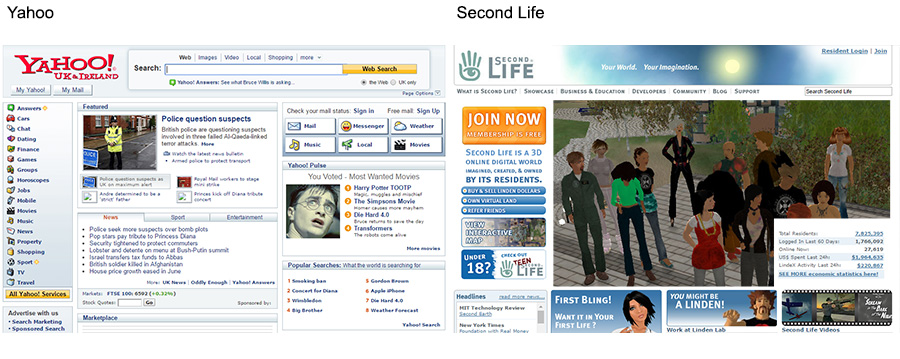
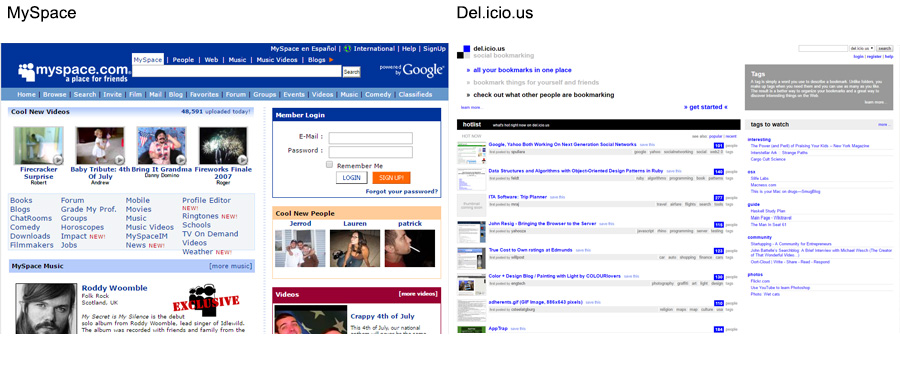
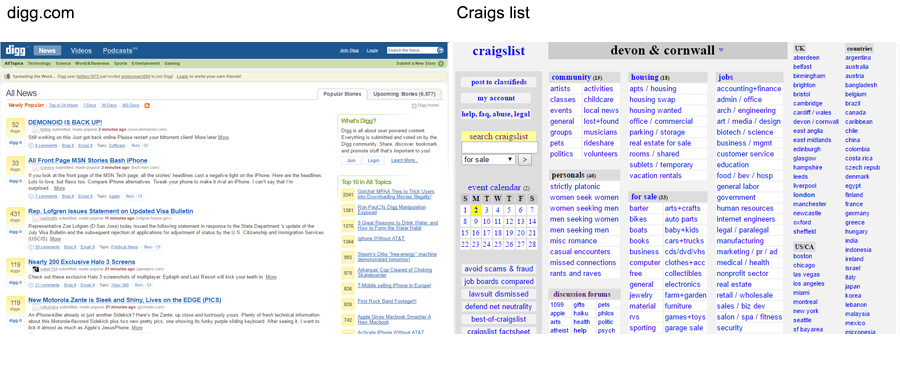
Behave yourself
The statistics paint a clear picture of our changing behaviour... back then we used the internet differently, and a lot less. In the UK in 2007, 67% of households had internet access compared to nearly everyone (93%) in 2016. Ten years ago, 23% of people in the UK had never used the internet, compared to a vanishingly small 4% in 2016. The proportion of people using the internet daily has risen in all age groups and is now the norm for most of us in Europe. [1]
The amount of time we spend on all activities - everything from emails, reading online news to internet banking - has increased. Back in 2007, it was already popular to use the internet for travel - remember lunchtimes spent searching for cheap holiday flights? This was at a time before most of us had heard Tripadvisor and the founders of AirBnB were just about to inflate an airbed in their living room and turn it into a bed & breakfast. [2]
Telephone or video calls over the internet has taken off hugely with a more than 5 fold increase between 2007 and 2016, as internet speed and picture/sound quality has risen and costs have fallen. Overall, daily internet use for UK adults has nearly doubled in the last 10 years. [3]
Of course, the way we access the internet has changed too, with mobiles and smartphones overtaking all other devices (71% of internet access compared to 40% by desktop in 2016) and Smart TVs appearing for the first time. [4]
Look how you've grown!
Along with their logos, the big players have constantly tweaked and updated their websites over the last 10 years, not to mention a few major redesigns along the way.
- BBC - in 2007 the BBC celebrated its own 10 year anniversary, having launched in 1997. They started promoting video more and live streaming their News channel. Gradually the look of the site changed and eventually they let go of their 600px fixed-width design. Over the years images have got larger while more and more content became audio and video. They had a major revamp in 2010 and launched their fully responsive design in 2015. Their website now has more bigger images and a lot more video content.
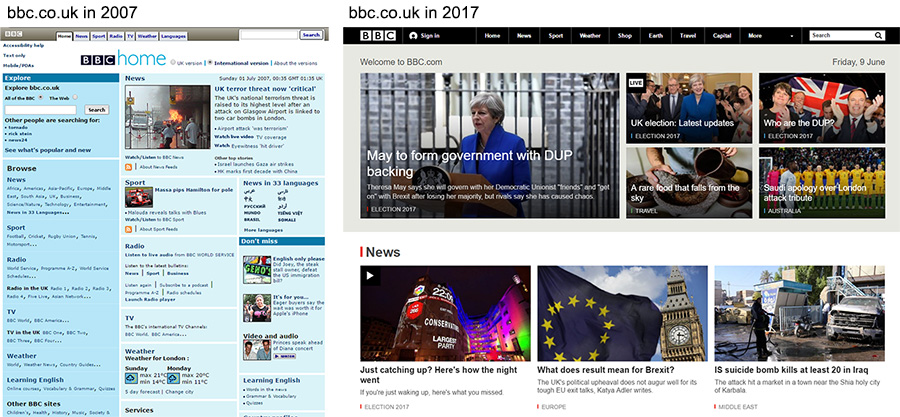
- eBay - AuctionWeb born in 1995 was renamed to the now familiar eBay in 1997. By 2008 it had become a global entity with hundreds of millions of registered users, 15,000+ employees and revenues of almost $7.7 billion. It has bought (or bought into) many other sites including Skype, Craigslist and Gumtree. In 2015 PayPal was spun off into a separate company.

- Amazon - from humble beginnings as a bookseller in 1995, Amazon is now the largest internet-based retailer in the world (by total sales and share value), although it took until 2015 before it consistently made a profit. Like Netflix it has moved into streaming digital content and financing films for exclusive distribution. Todd Haynes film Wonderstruck premiered at the 2017 Cannes Film Festival and competed for the Palme d'Or; it will be distributed later in the year by Amazon Studios.
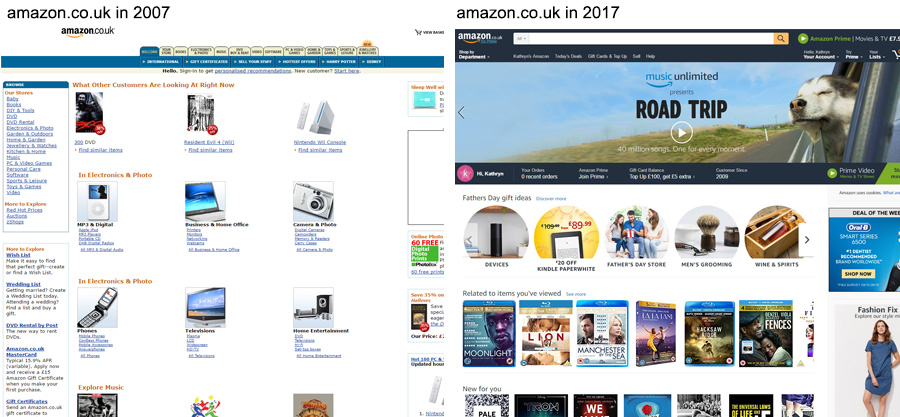
- Google - when Google entered the world in 1996 there were several search engines; fast forward 20 years and for most people, Google is the only one that matters. With countless other internet services from email to Chrome, Android OS, photos, document sharing, calendars, maps and YouTube amongst many others, most internet users depend on Alphabet Inc. (Google's parent company) to a greater or lesser extent every day. The Google logo remained unchanged from 1999 to 2010, then in 2015 the san serif version was unveiled.

- Wikipedia - the free online encyclopaedia launched its English language version in 2001, then grew rapidly. Growth of Wikipedia peaked in 2007, and by September it had over two million articles, making it the largest encyclopaedia ever assembled. It appeared in the top ten most popular websites in the US for the first time in 2007. For many people it is still a staple reference, despite criticisms of inaccuracy, vandalism and bias. Spot the difference below? The design and layout has changed very little in the last 10 years.
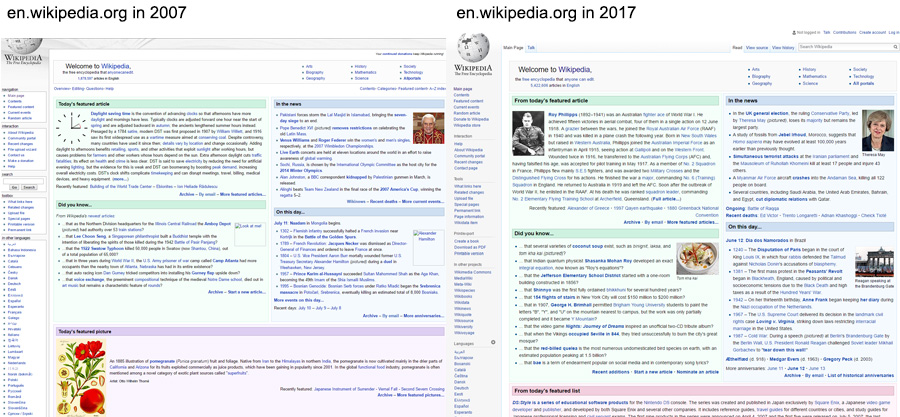
References
[1] Source Eurostat
[2] Source ONS
[3] Source ONS
[4] Source ONS
Tagged under: Bluffers guide Hot topics Web page size Design Fun